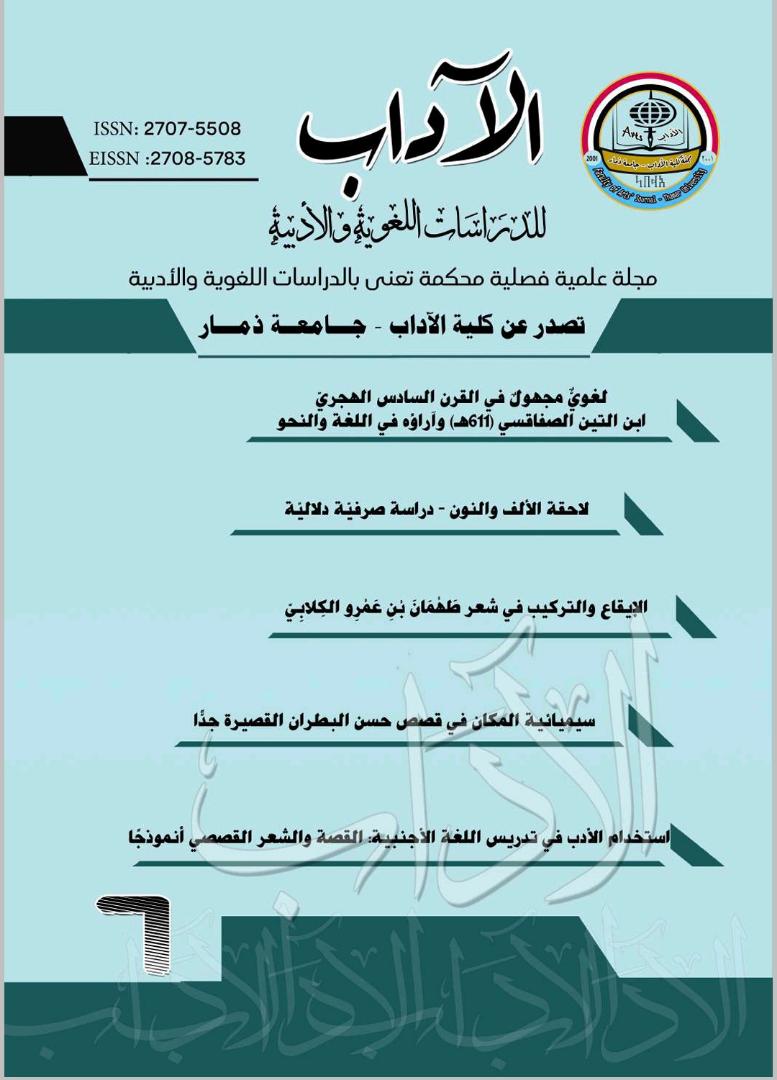Connotation of Number in the Holy Quran
DOI:
https://doi.org/10.53286/arts.v1i7.277Keywords:
Connotation, Number, Singular, Al-muthanna, PluralAbstract
The present study aims at exploring some aspects related to expressing singularity, duality, and plurality in the Holy Quran. It reveals the significance of the utterance of the noun when it deviates from its original meaning and acquires a new semantic connotation, taking the position of another number. The singular number takes the position of “al-muthanna” (dual) or the plural, and “al-muthanna” (dual) also takes the location of the singular or plural. Similarly, the plural functions come as the singular or “al-muthanna” (dual) according to context and for the purpose of eloquence. The research paper discussed some of the applied models employing both the descriptive and the analytical approaches. The results of the study indicate that the semantic significance of an utterance in a different structural position usually occurs for linguistic and rhetorical purposes. The study also reveals that using ‘the singular’ to express a plural is specific to poetry. The singular can also be used to address “al-muthanna” (dual). A part of the body consisting of two parts can be also expressed in the singular form. Likewise, an infinitive can be made plural for semantic significance. In addition, “al-muthanna’ (dual) can be used just for the sake of multiplication.Downloads
Downloads
Published
How to Cite
Issue
Section
License
Copyright (c) 2021 عمر بن علي المقوشي

This work is licensed under a Creative Commons Attribution 4.0 International License.
Copyright and Licensing
copyright is retained by the authors. Articles are licensed under an open access Creative Commons CC BY 4.0 license, meaning that anyone may download and read the paper for free. In addition, the article may be reused and quoted provided that the original published version is cited. These conditions allow for maximum use and exposure of the work.



